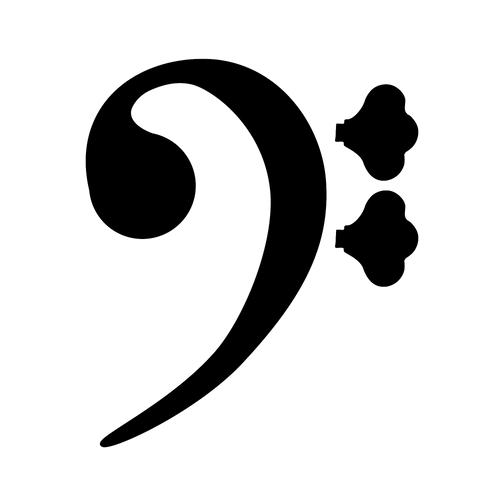Your left hand does most of the work when you play the double bass. Get this right and you set yourself up for years of good playing. Get it wrong and you fight tension and pain every time you practice.
I learned this the hard way. Early in my training, I pushed too hard with my fingers. My thumb gripped the neck like I was holding on for dear life. The result? Fatigue after 20 minutes, and a sound that never sang the way I wanted.
Let me share what helped me build a solid foundation.
Thumb Position Basics in Double Bass
Here's the thing about your thumb. It matters way more than you probably think. According to Discover Double Bass, the thumb acts as a pivot point for your entire hand. You want to place it on the back of the neck, roughly opposite your first and second fingers. Keep it relaxed and slightly curved.
A lot of players squeeze the neck between their thumb and fingers. I see this all the time. This creates tension that travels up your arm and into your shoulder. The Double Bass HQ explains that excessive pressure in the left hand leads to fatigue and limits your speed and accuracy. The solution? Think of your thumb as a guide, not a clamp.
Testing Your Grip
Try this next time you practice. Play a scale and pay attention to your thumb. Does it press hard into the neck? Does it stay in one rigid position? Loosen your grip until you feel like the bass might slip. Then add back just enough pressure to maintain contact. That's your baseline.
You want contact, not force. There's a difference.
Finger Placement
Your fingers should curve naturally over the strings. Keep your knuckles rounded, not collapsed. The Strad notes that double bass beginners who learn to play in all left-hand positions from the start develop better overall technique and hand shape.
Place your fingertips on the strings, not the pads. This gives you a clearer sound and better intonation. The distance between your fingers and the string should be minimal. Lifting your fingers high off the fingerboard wastes time and energy.
Dealing With Tension
Look, tension kills tone. When your hand tightens up, your vibrato suffers, your shifts get choppy, and your endurance drops.
Check your hand every few minutes when you practice. Are your fingers rigid? Is your wrist bent at an extreme angle? These are signs you need to reset.
Building Awareness
Double Bass HQ suggests that awareness is the first step to reducing tension. Notice when your hand tightens. Stop. Shake out your arm. Start again with less pressure.
Your wrist should stay relatively straight, forming a line from your forearm through your hand. Extreme angles in either direction create strain. Think of your arm, wrist, and hand as one connected unit that moves together.
Building Strength the Right Way
Strong fingers help, but forced strength training often backfires. Instead of squeezing harder, focus on playing more consistently. Regular practice builds the specific strength you need.
Start with simple exercises. Play long tones in the first position. Focus on clean contact between finger and string. Gradually add speed and complexity as your hand adapts.
Your endurance may improve over weeks and months, not days. Be patient with yourself. Push too hard, too fast, and you risk injury.
I know you want to sound great tomorrow. We all do. But your hands need time to adapt.
Shifting Between Positions
Moving your hand up and down the fingerboard takes coordination. Your thumb leads the motion. As you shift, your thumb slides along the neck while your fingers maintain their curved shape.
Practice shifting slowly at first. Feel how your hand moves as one unit. Your thumb, fingers, and wrist should all travel together. Isolating one part creates awkward, jerky movements.
Why Multiple Positions Matter
The Strad emphasizes that players who train in multiple positions early develop smoother shifts and better overall facility. Don't stay stuck in first position for too long.
You might feel safer down there. But you're limiting yourself.
Daily Double Bass Practice Tips
Spend five minutes at the start of each session checking your hand position. Play a scale slowly. Watch your thumb. Feel your finger curve. Notice any tension.
Record yourself. Video shows you things you miss in the moment. You might discover your wrist bends more than you thought or your fingers lift too high.
Getting Outside Help
Work with a mirror when possible. Visual feedback helps you correct issues before they become habits.
Ask your teacher to check your hand position regularly. Even advanced players benefit from outside observations. We all develop blind spots over time.
Wrapping Up
Left-hand technique forms the foundation of your playing. Solid basics give you the freedom to focus on music instead of fighting your instrument.
Start with proper thumb placement. Keep your fingers curved and your wrist aligned. Stay aware of tension and address it before it becomes chronic. Build strength through consistent, mindful practice rather than force.
These principles guided me through Curtis and continue to serve me in performances today. They may help you, too.
Put Your Technique to Work
Once you feel comfortable with these basics, you need music that lets you apply what you learned. I created Double Bass BASSics for players who prefer staying under the thumb position. These short pieces sound great on orchestral basses and include fingering suggestions to help you develop solid left-hand habits. You get three works in PDF format, and I'll send you free updates when I add new pieces to the collection. Check it out here.

